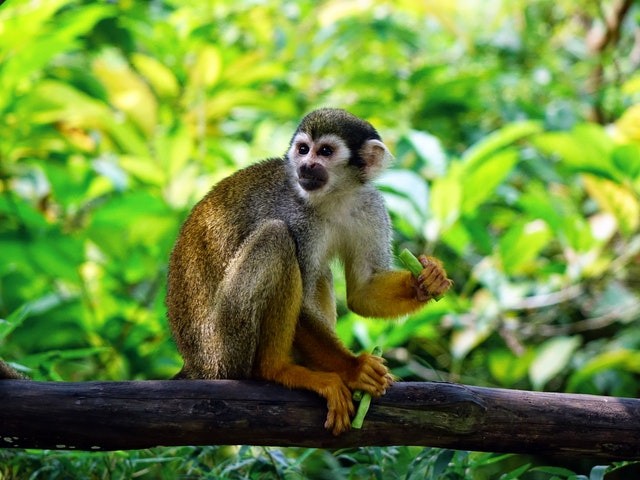Scientists recently claimed they were forced to reach for their guns and fire out after what was described as a "bloodthirsty" troop of five-foot, monkey-like creatures ambushed them in Asia.
Daily Star reported that two scientists thought they had encountered a family of Yetis when trekking through Nepal's Himalayas, where they turned so scared they began to shoot.
Scientists 'ambushed by gang of aggressive beastly monkeys' opened fire in panic
— Daily Star (@dailystar) April 2, 2022
https://t.co/Ew2yS4GrTv
T
According to George Physician George Moore and Entomologist George Brooks, they were traveling along the famous pilgrim route of Gosainkunda Pass in Nepal when a huge male beast led a charge of approximately "seven angry apes." The pair said they got separated from their porters, further back along the tail while they trekked to Kathmandu.
ALSO READ : 3 Wild Instances of Evolution Replicating Itself

Describing the Encounter
The remote path tucked away in the Himalayas passes Gosainkunda Lake, which Buddhist and Hindu visitors believe formed when Shiva pierced a glacier with his trident to get water after swallowing a threatening poison to destroy a world.
For all its popularity since the latter part of the 19th century, some visitors claim they encountered legendary Yeti or any other mystery species in the form of gigantic ferocious monkey locals call Kra-Dhan.
Whatever the species was spooked hikers had seen while traveling, it was definitely enough to leave them terrified and relieved to be able to escape without any harm.
Moore detailed their harrowing experience in 1953 in a 1957 article entitled I Met the Abominable Snowman, describing their encounter, published in Sports Afield.
7 Monkeys Encountered
He said, "A hideous face thrust apart the wildly thrashing leaves" and gaped at them in the piece. It was a face that appeared to extend from one ear to the other, and long, yellowish teeth chattered. However, those eyes, beady and yellow, described the physician, stared at them with evident demoniacal anger and cunning.
Moore also said they could make out six of seven monkeys through the mist. One appeared carrying a baby around his neck. The creatures, he added, seemed to mean business as they growled at each other.
The one who had pushed through the foliage was the leader. There was a question about this leader's authority as it led to the attack. The terrified pair said they desperately reached for the guns, which they fired a few times each over the heads of the creatures to scare them off.
Tibetan Macaque, Largest Species
Andy McGrath, the author of the Beasts of the World, suggested that the most likely culprit to have launched the attack "is a troop of giant mountain macaque," which is probably native to eastern Tibet.
Essentially, the Tibetan macaque is the largest species of macaques and inhabits the mountainous subtropical forests of eastern Tiben and eastern-central China, although it still only stands a little taller than two feet.
Also, according to McGrath, what the pair of scientists saw might have been the outcome of insular gigantism, in which the pressure of an isolated and limited environment led to a small population of mountain macaque developing into larger and more aggressive monkeys.
Yeti Monkeys
A Mythology.net report specified that few people "have encountered Yetis in the while." Even fewer individuals have had encounters that lasted several seconds.
With their elusive nature, it isn't easy to pin down the personality of Yeti monkeys, other than saying they do not like to be seen by humans. Even though they are not friendly to humans, it is possible that these so-called "abominable beasts" are, in fact, social creatures.
Local people tell stories of the "metoh-kangmi" that live in tribes, and many witnesses have accounted for two or more of the creatures together.
At the same time, local legends claim that no one seeing the wild-man will live. They are extremely territorial and can become violent in a second if they think humans are posing a threat to their way of life.
A related report about monkeys that kill is shown on Big Animals' YouTube video below:
RELATED ARTICLE : People in Pennsylvania Warned Not to Go Near Escapee Monkeys Who Are Part of a 'Mysterious Experiment'
Check out more news and information on Monkeys on Science Times.
© 2025 ScienceTimes.com All rights reserved. Do not reproduce without permission. The window to the world of Science Times.












